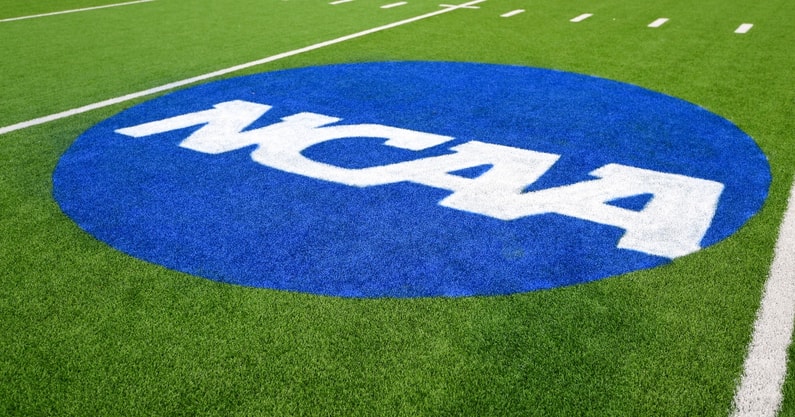Breaking down why the NCAA is facing a potential extinction level problem

During a recent episode of Andy Staples On3, Jesse Simonton and Andy Staples the pair broke down why the NCAA is currently facing a potential extinction-level problem that it needs to face.
This began with a listener question, asking Staples if he could turn a MAC school into a national power, akin to Gonzaga in basketball if he were a billionaire donor.
“So, do you think I could become Toledo‘s sugar daddy?” Staples joked. “We’ve got to call Toledo AD Bryan Blair and be like, ‘Bryan, I’m hooking you up with $100 million a year every year.’ Not $100 million. What are we shaving off in interest from $1 billion every year? Like if I just sit it in an account or if I have a medium growth mutual fund? Am I shaving off $30 million a year for Toledo to just go buy a championship?”
This was a lighthearted topic for the pair to talk about, but it also served as a jumping off point to talk about challenges coming in the future of college football.
“Let’s spin this forward. Five years from now, what has the — I almost said alliance — what has the partnership between the Big Ten and the SEC wrought? Will it be a super league? Will it be a different NCAA that has a kind of subdivision at the top where there are rules but there are also contracts and there’s also maybe a CBA?”
At that point, Simonton jumped in and said he expected that within five years. That prompted Staples to point out the challenges that the NCAA is currently facing in its legal battles and how that could impact things.
“That’s amazing. There’s a case…the House v. NCAA case, which is basically former athletes sued the NCAA saying, ‘Hey, if you hadn’t been breaking the Sherman Act before and had allowed us to get NIL payments, we would have made this over our careers.’ The settlement to that is potentially in the billions of dollars. The class has been certified, the NCAA says this is an extinction-level event. They have to come up with a new system to satisfy that case first. Like, to keep people from being able to do that over and over again and just cash in on it.”
For Simonton, it’s incredible how the NCAA is still approaching these court cases after losing the Alston case 9-0 at the Supreme Court.
“The NCAA, whether it’s Charlie Brown with the football, they like going in to these court cases and losing every time, as if the Alston 9-0 one wasn’t bad enough.”
Top 10
- 1Breaking
AP Poll Top 25
Shakeup after turbulent Saturday
- 2Hot
Coaches Poll
Big shakeup in Top 25
- 3
LSU coaching changes
Tigers to make changes Sunday
- 4Trending
Coaching Carousel Intel
Kelly, Freeze feeling the heat
- 5
College Football Playoff
Projected 12-team bracket
Get the Daily On3 Newsletter in your inbox every morning
By clicking "Subscribe to Newsletter", I agree to On3's Privacy Notice, Terms, and use of my personal information described therein.
At that point, Staples made the argument that the NCAA is barely trying because it knows that it currently lacks valid arguments.
“Now, we’ll see with that Tennessee and Virginia one because they don’t have to grant the restraining order. They could just say, ‘We’ll leave the rules as is and then we’ll talk it through during the actual case.’ So, that’ll be fine if they want to do that, or they could change everything next Tuesday.”
One of the recent key cases was the West Virginia case over the Transfer Portal that ultimately allowed players to transfer a second time without sitting out.
“I keep pointing out, that second transfer, having to sit out a year after the second transfer, that’s like a fairly reasonable rule to me,” Staples said. “That doesn’t feel totally unreasonable. You gave somebody a free transfer, there’s only four years to play, like it’s okay, but it lasted maybe two hours in court. It got destroyed.”
This is a point that Simonton emphasized can become a concern, especially among the coaches.
“And the coaches, I will say, talking to a bunch of coaches, they hate that more than almost anything. Some hate it for various reasons, obviously selfish reasons, for roster management,” Simonton said.
“But then there’s others, one very prominent coach who shall not be named here because he didn’t say it on the record, but he was concerned and talked about what these multiple transfers are going to do for these kids’ academic standing and how many guys ultimately from now until they figure out a solution to what this whole system’s actually gonna look and end up graduating with no degrees and are 28 years old and have been to three or four universities and really have nothing to stand on.”